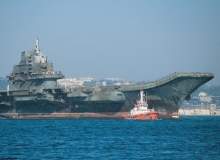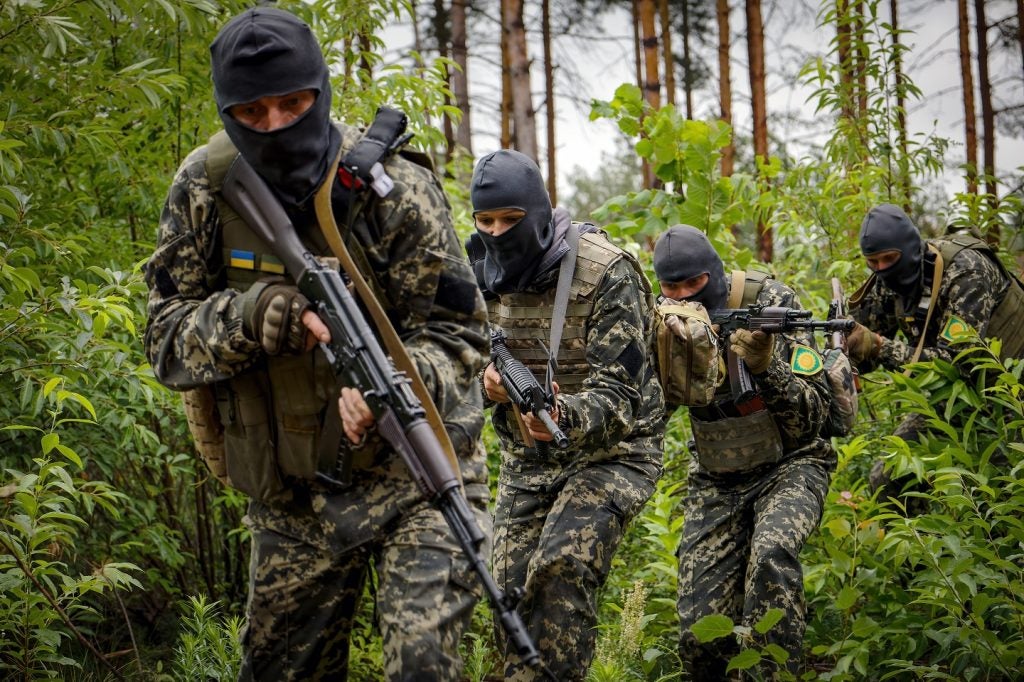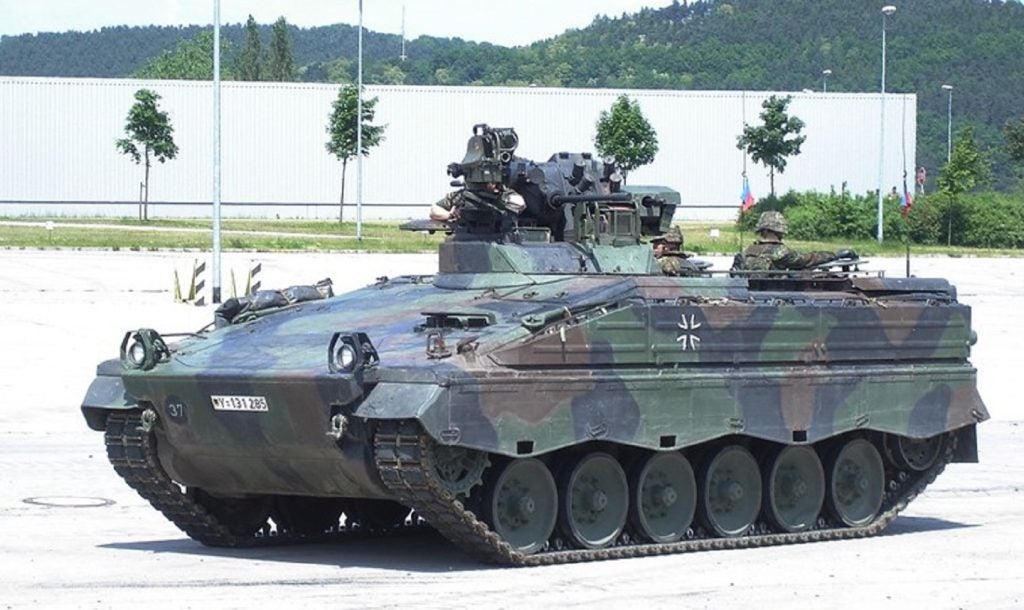
According to the Stockholm International Peace Research Institute (SIPRI), 2010 saw expenditure across the region peak at just less than $290 billion – 80% up on the start of the decade – and Asian nations now top the list for global weapons imports.
Securing supply lines has formed a significant driver, while territorial disputes and the rise of China have also played their part, leaving many nations – including Australia, Indonesia, Japan, Malaysia, Singapore, Thailand and Vietnam – strengthening their defence positions. In what the Australian Defence Minister, Stephen Smith, describes as "a region in strategic flux," all eyes are on the main players.
With state-of-the-art weaponry being acquired in the Asia-Pacific at a scale and pace that matches the Cold War arms race, the security landscape is constantly changing as regional forces gain greater capacity for power-projection.
Funded by growth, and largely driven by a desire to protect the resulting prosperity, it is perhaps ironic that the region’s economic inter-dependence may yet form the most potent safeguard against those capabilities being used in anger.
China
Over the last two decades, China’s defence budget has grown by 13% a year, though estimates put the real figure considerably higher than the ‘official’ $78.6bn; SIPRI suggests $114bn, while the Pentagon’s ‘guesstimate’ approaches $150bn. Allowing for lower manufacturing and manpower costs, its effective worth could be twice that and despite Beijing’s global ‘great-power’ ambitions, currently at least, it is almost entirely regionally focussed.
See Also:
This has added an impressive collection of conventionally-armed ballistic and cruise missiles to the inventory and beefed-up surface-to-air defences, while 4th-Generation warplanes, smart weapon systems and major electronic upgrades have bolstered air power.
How well do you really know your competitors?
Access the most comprehensive Company Profiles on the market, powered by GlobalData. Save hours of research. Gain competitive edge.

Thank you!
Your download email will arrive shortly
Not ready to buy yet? Download a free sample
We are confident about the unique quality of our Company Profiles. However, we want you to make the most beneficial decision for your business, so we offer a free sample that you can download by submitting the below form
By GlobalDataA 5th-Generation stealth fighter, the J-20, is also being tested. China’s navy has expanded its submarine fleet over recent years and now boasts its first aircraft carrier, with more to follow.
A number of other surface vessels have also been procured, including a new stealthy littoral combat class. Conventional assets aside, the latest Pentagon report states "China is both qualitatively and quantitatively improving its strategic [nuclear] missile forces."
National pride, territorial integrity and desire to secure trade routes form understandable drivers on Chinese military expansion, but inevitably stoke the fears of regional neighbours. Many observers now openly question if Beijing’s long-held tenet of non-interference can last as China’s global economic presence continues to grow.
India
India’s military budget is $36.03bn – up 11.6% for the financial year 2011/12. Recently becoming the world’s largest arms importer, New Delhi is looking to acquire still more advanced technology and weapon systems to further enhance defence capabilities.
The Indian air force is set to purchase 126 aircraft – either Eurofighter Typhoons or Dassault Rafales – once the final winner of the Medium Multirole Combat Aircraft Competition is announced, and other planned ‘big ticket’ items include helicopters, ultra-light howitzers and amphibious assault vessels.
The eastern naval command has been progressively beefed-up over the past six years and this expansion will continue with the first indigenously designed nuclear Arihant-class submarines being based at a new facility, codenamed Varsha. A significant carrier programme is also underway, to bring both the refurbished INS Vikramaditya and home-grown INS Vikrant into service by 2014.
Much of India’s stance arises from its ‘look East’ policy, and while it is too simplistic to suggest this is solely a response to Chinese ascendancy, it is undeniably a factor.
Although their respective areas of influence do not immediately overlap, both countries are aware that India provides the only credible check on Chinese hegemony in the region, and as each seeks to extend their international links, that strategic rivalry seems set to grow, despite the rapprochement of recent decades.
Russia
While not all of Russia’s $52.586bn budget is allocated to the Pacific, over the last few years, Moscow has become a markedly more visible player in regional security.
Currently embarked on a major modernisation programme, with planned purchases in 2010 including two strategic missile submarines, 36 strategic ballistic missiles and 20 strategic cruise missiles. A new land-based ICBM system is also under development, due to be completed by 2013 – the same year that Prime Minister Putin has called for the production of ballistic missile systems to be doubled.
In addition, June saw the conclusion of the long-awaited deal with France to acquire Mistral-class multirole helicopter carriers, some of which will bolster the Russian Pacific fleet. Russia is also cementing its role as a key supplier of military hardware to the region, showcasing a range of combat aircraft, small and medium displacement surface vessels and compact submarines.
In many respects, Russia is at a cross-roads, facing uncertainty over its strategic role in the Asia-Pacific, while seeking to reassert itself on the international stage, principally by leveraging its energy resources.
The key question seems to be whether Moscow intends to remain an independent player, or sees a closer partnership with China as the means to advance Russian interests within the region. For the moment at least, that issue appears to be unresolved.
The Korean peninsular
South Korea is currently the joint second (with China) largest importer of conventional weapons, accounting for six percent of global sales between 2006 and 2010, with a defence budget of $26.55bn. In general terms, Seoul continues to cement its advantage over the North in force quality, developing its missile defence programmes at a cost of $214 million, enhancing military communications and embarking on a significant round of ship-building and combat aircraft purchases.
While it is impossible to obtain details from the secretive and cash-strapped North, it is clear its appetite for cutting-edge weaponry remains undiminished. The willingness of potential sources – China and Russia – to supply them, however, seems limited, despite Kim Jong-Il’s overtures to both during visits this summer.
After the ROKS Cheonan and Yeonpyeong Island incidents, China is not disposed to provide the new fighters that Kim seeks to counter Seoul’s growing aerial supremacy – and neither is Russia, given the importance Moscow places on its energy-politik approaches to the South.
Pyongyang’s inability to replace ageing weapons inventories, coupled with the country’s feeble economy has significantly eroded the North’s conventional military capabilities over the past decade, leaving the country relying on the deterrent value of its much vaunted nuclear programme. Inevitably, this leads many to question the sincerity of the reported readiness to discuss ending tests if the six-party talks on de-nuclearisation resume – but then mixed messages are nothing new from this unpredictable regime.







